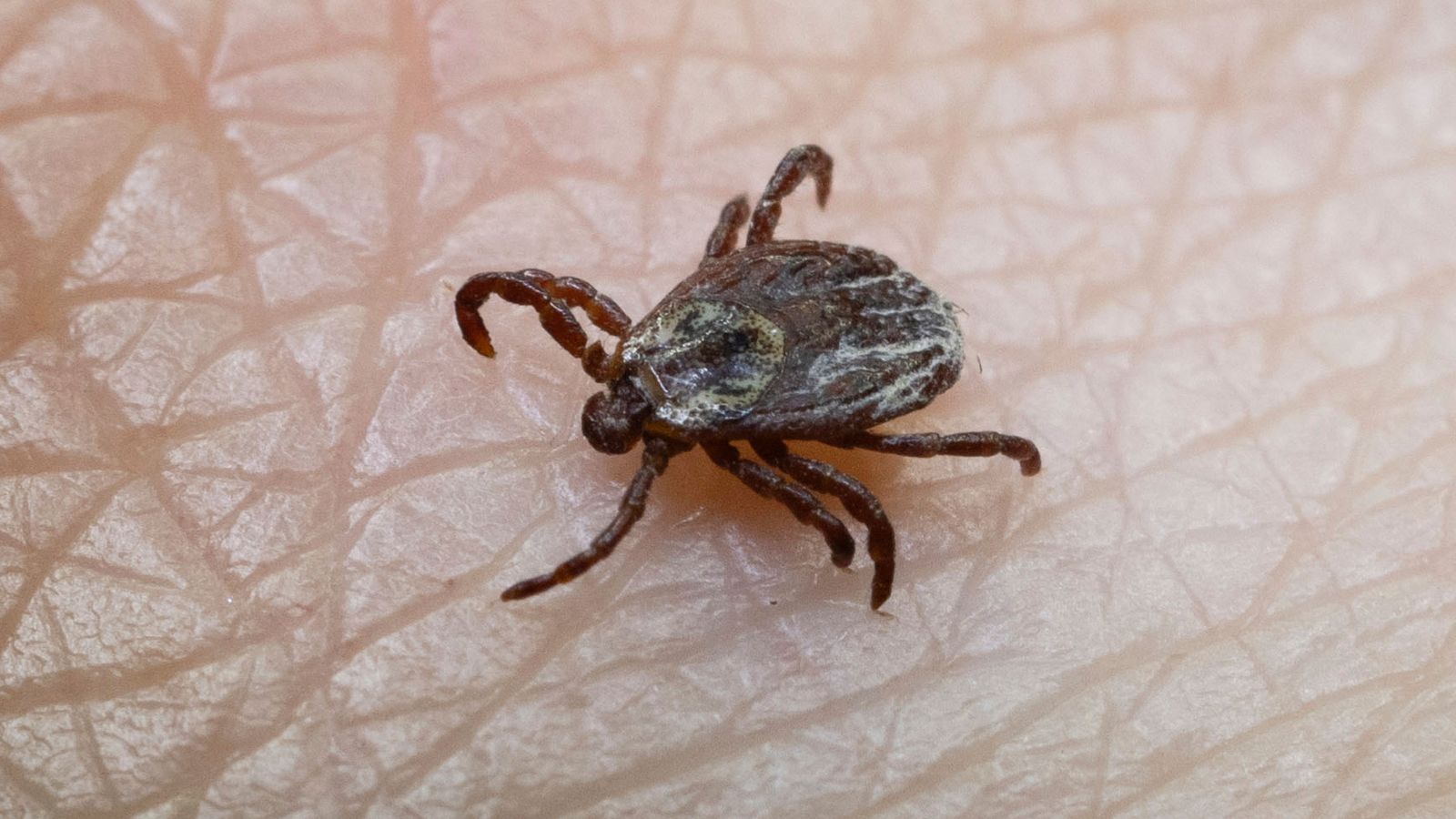Climate change is “likely” to increase the activity and distribution of ticks in the UK, which could lead to a rise in Lyme disease cases, according to the UK Health Security Agency (UKHSA).
A potentially warmer and more humid climate is expected to result in ticks – which can infect humans with Lyme disease – being more active.
In most, but not all cases, a circular or oval “bullseye” shaped rash can be an early symptom of the bacterial infection, usually appearing within one to four weeks.
Reported cases have been rising, with a nearly 40% increase in acute cases of Lyme disease last summer.
The UKHSA says warmer, more humid temperatures are creating “favourable conditions” for ticks to thrive.
It’s expected that mild winters and warmer springs will lengthen the period that ticks are active – increasing the likelihood of tick bites.
The latest UKHSA data shows that in England, there were 882 acute cases of the disease between April and September last year, when ticks are most active.
That’s compared to 635 cases in 2022.
Read more on Sky News:
Coal plants in China soar despite Xi’s pledge to control dirtiest fuel
Escaped racehorse joins commuters at train station – and stands behind yellow line
Jolyon Medlock, head of medical entomology at the UKHSA, told Sky News that ticks from “other parts of Europe” could appear in the UK.
He said “as climate warms in the UK in the coming decades, species that are not normally found in the UK might suddenly appear”.
“If there are more people exposed to ticks, we are likely to see more cases of Lyme disease in the future,” he added.
Laura Edwards, 34, was diagnosed with the disease in late 2019, after being “very very sick”.
With no memory of being bitten, she saw doctors over a period of seven years prior, looking for a diagnosis to explain her aches and pains, brain fog, oedema and sore joints.
She told Sky News she thought she was bitten by a tick as a child, but the symptoms did not appear until over a decade later.
Ms Edwards said: “Not only was I getting the physical symptoms, severe brain fog, severe fatigue, I was struggling to even get up in the mornings. Not knowing, forgetting things.”
She added her nerves were also affected “so I was falling over a lot”.
Her diagnosis resulted in four years of treatment, first with antibiotics via an IV drip, five hours a day for three weeks, before moving to oral antibiotics for a year and a half.
Raising awareness of the disease is Lyme Disease UK, a charity providing patient support.
Chair Natasha Metcalf has urged people “not to panic” if bitten by a tick, and to “learn how to remove a tick safely”.
She told Sky News it “involves using fine nose tweezers or a proper tick removal tool, not burning off with a match, not using Vaseline or anything else not designed to do the job”.
Ms Metcalf said people must remove the whole tick, not leaving any parts of its body in the skin.



